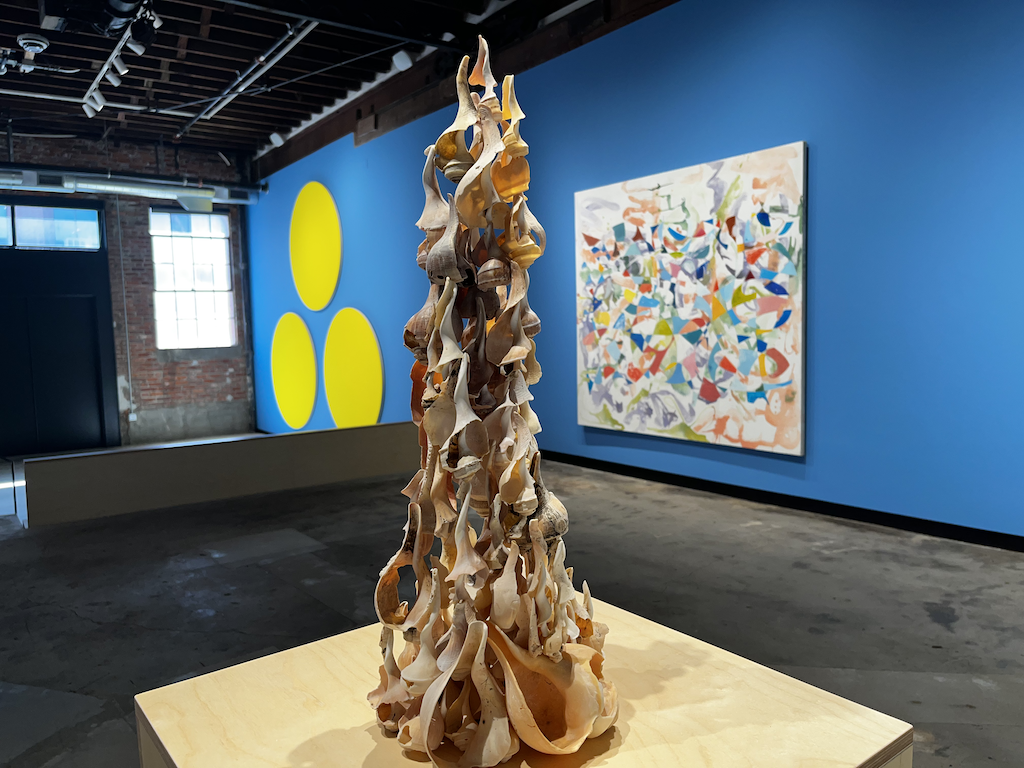"Spatial Poems"
Tulsa Artist Fellowship Flagship
through August 9, 2025
I’m standing in a quiet room, looking at a brick wall. There’s a soft clunk behind me, a sound like a warped piece of machinery. My eyes track downward to a video in which a curly-haired woman in a grassy field is buttoning and unbuttoning a pink housedress. Tracking left, they catch curves of salmon and ultramarine at the edge of something enormous. I hear the clunk again—this time it happens just as the woman finishes the very top button.
Full afternoon sun pushes through a window, turning the floor into parallelograms; to my right, three giant yellow circles hover triangularly on a sky-blue expanse. Clunk, clunk. I turn around—a semicircular, two-step movement that reveals the source of the sound as a scuffed aluminum disc rotating inside a frame with a disc-sized hole in it. As I look at it I remember seeing, in the frame of the window, now behind me, a tiny pewter sculpture adorned with light green stems, at the ends of which perch slightly wilted yellow flowers. Clunk.
Is this real life, or an art happening? In Spatial Poems, it’s both.

I wouldn’t have even thought of “turning around” as being “semicircular” until I realized how many shapes and rhythms and distances my body was interacting with in the current exhibit at the Tulsa Artist Fellowship Flagship. I didn’t mean to make a movement that harmonized with all this! After a few minutes standing in this space, I was laughing with the recognition that any person hanging out with the pieces in this show is completing the show.
Give yourself at least a good 30 minutes in Spatial Poems, ideally more. It’s one of the most extraordinary art experiences I’ve had in Tulsa this year, curated by Cassidy Petrazzi1 in response to a performance score by the video and installation artist Mary Lucier.
A score, in this context, is a set of instructions that can be performed by anyone anywhere. This one reads as follows:
"Select an image of an environment. Concentrate on this image, discovering all the circles, squares or triangles in it, until either the original scene is obliterated or an entirely new landscape emerges, or until your mind can no longer hold all the information. —Mary Lucier, Media Sculptures: Maps of Space #1, published in Womens Work (1975)"
Lucier is affiliated with an art movement called Fluxus; go down the YouTube rabbit hole on Fluxus and you’ll find the likes of Yoko Ono, Nam June Paik, Joseph Beuys, and other influential figures like Alison Knowles, Simone Forti, and George Maciunas (its “official” founder). I highly recommend that rabbit hole. Launched around 1960, Fluxus was a radical, playful, convention-subverting movement, informed by the work of John Cage, and its legacy is still making heads spin with questions about “what is art” and “what is non-art,” etc. (Knowles' piece called Make A Salad—which is exactly what it sounds like—has been performed around the world.)
But knowledge of it isn’t necessary to appreciate Spatial Poems. Actually, it might be more in the spirit of Fluxus if you don’t know anything about it: just show up and have the experience.
Petrazzi notes that “Lucier’s score is both a curatorial methodology and a viewer prompt”—in other words, a guide for the curator herself and a suggestion about how to engage with the work in the show. “Art doesn't ‘happen’ on the page or canvas—it happens in the encounter,” Petrazzi writes. “The works in this exhibition activate a sensory dialogue between viewer and environment, allowing new landscapes—real and imagined—to emerge.”
Those encounters and landscapes are wondrous; the individual works are also wonders in themselves. Petrazzi has gathered pieces from a multi-generational, multi-disciplinary group of artists for this show: the young Japan-based sculptor Umico Niwa; mid-career artists Julia Calabrese and Tulsa’s own Shane Darwent; and elders Olivier Mosset, Peter Young, and Mitchell Algus, each of whom is legendary in the art world. The curator’s hand is present in the choice and placement of the pieces, but it’s an almost invisible touch: the show feels like something whose elements naturally self-organized.
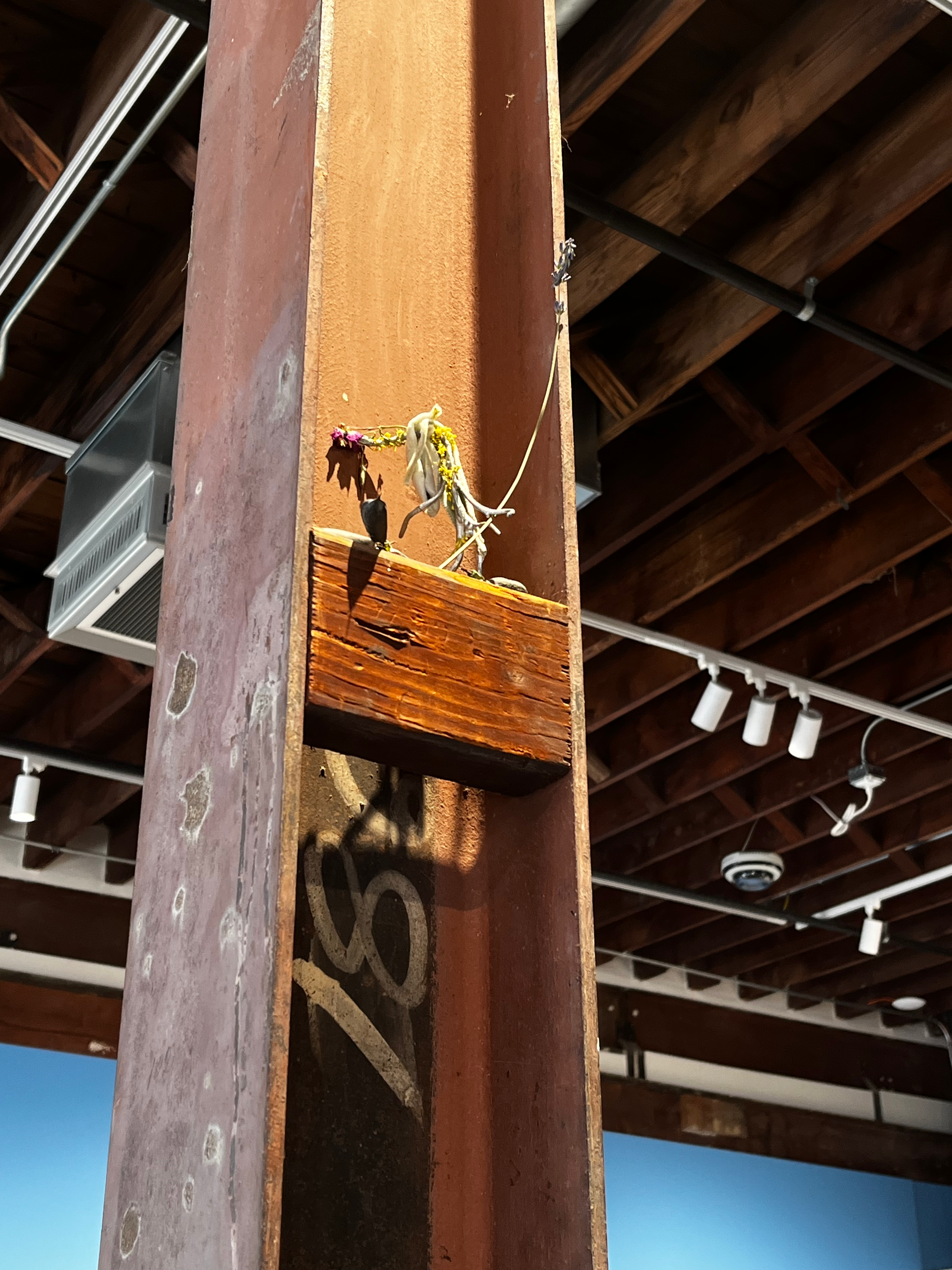
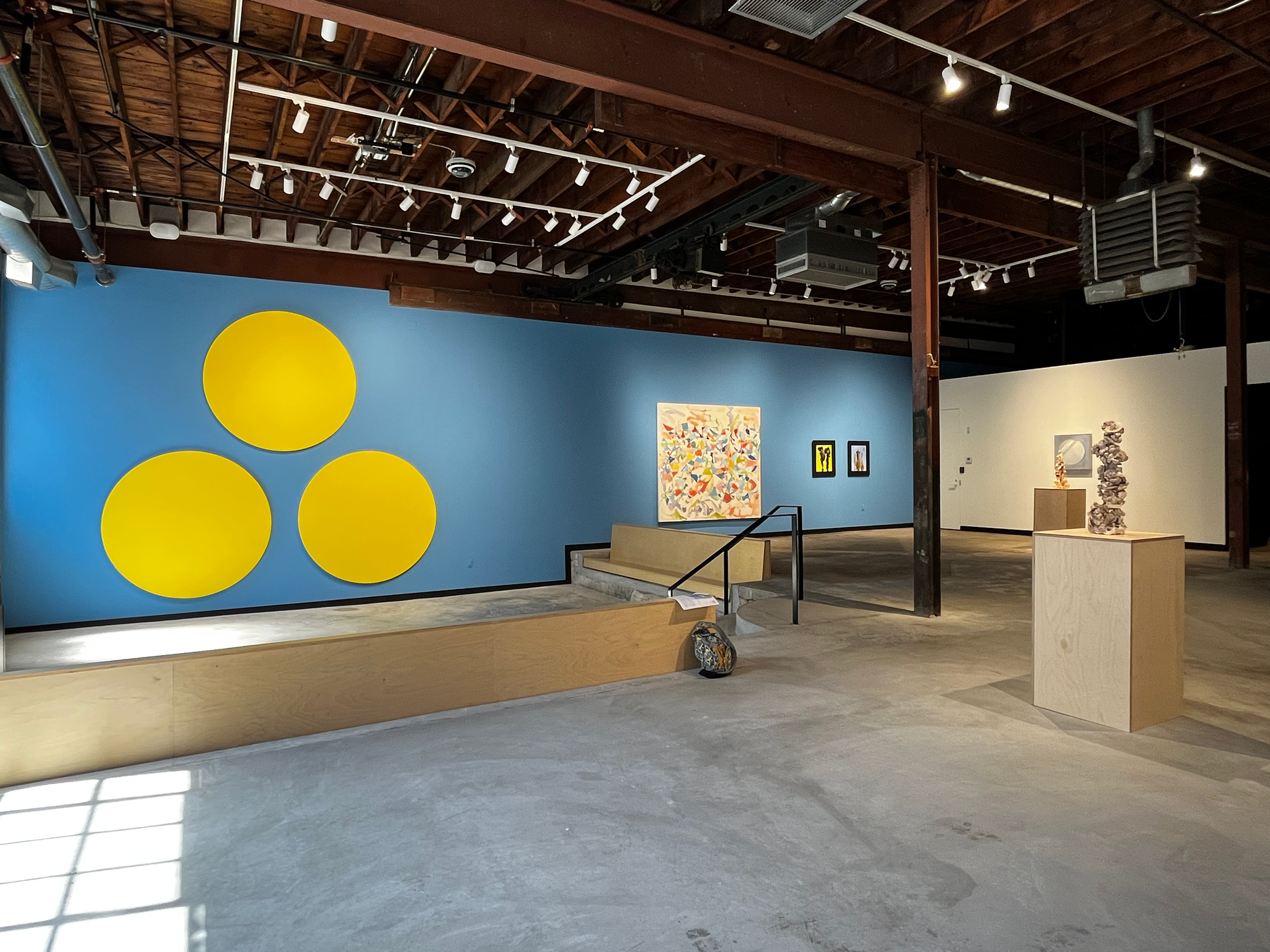
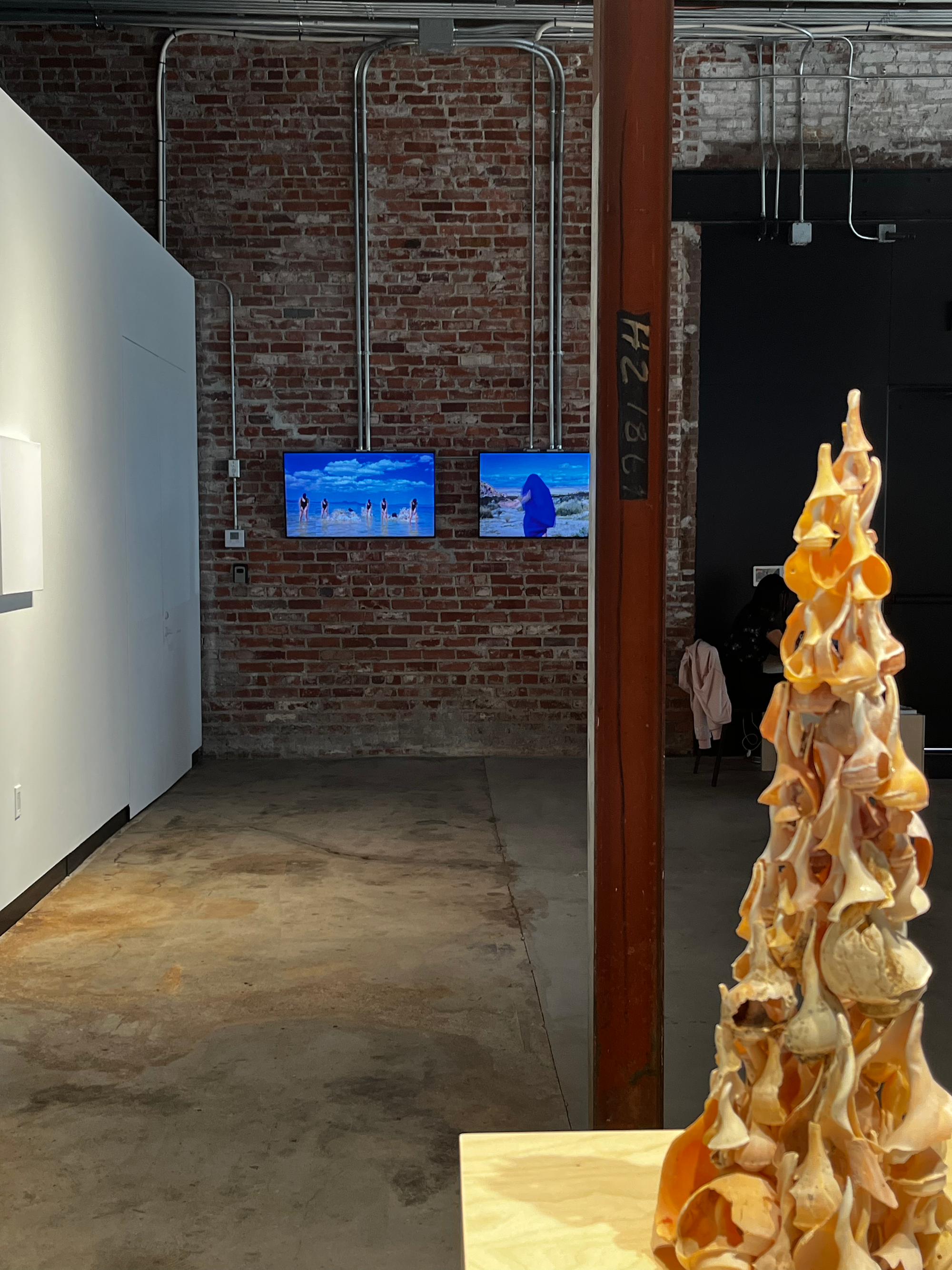
photos by Alicia Chesser
Algus’ crunchy, delicate towers of collected whelks and shells punctuate the otherwise open gallery floor, with whorls and crevices and surfaces that seem infinitely variable. Three of his oil paintings hang like Rorschach tests at the edges of walls. Young’s two canvases are equally mesmerizing with their curving tracery and scraps of color, like looking at a coral reef through a glass-bottomed boat; they’re also so massive that they catch the peripheral vision no matter where you’re facing. The loops of Calabrese’s videos bring bodies, movement, and human-land relationships directly into the dialogue. The spaciousness in this is room is an exquisite element in the experience: there's plenty of room (physical and mental) for whatever encounters may happen.
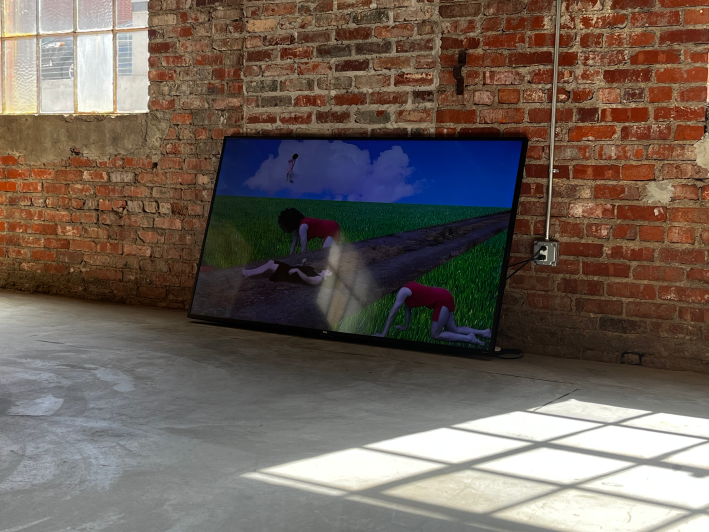
That rotating metal clunk I kept hearing? It’s by Shane Darwent, and it has a partner piece across the room that pleased me just as much, another motorized disc in which the corner of a corner curb forever detaches from and then reapproaches the rest of the curb. I loved watching for the split second when part became whole, loved it when they veered apart again in 359 degrees of new relationship—another of the show's rascally, meditative plays on meeting and mutability.
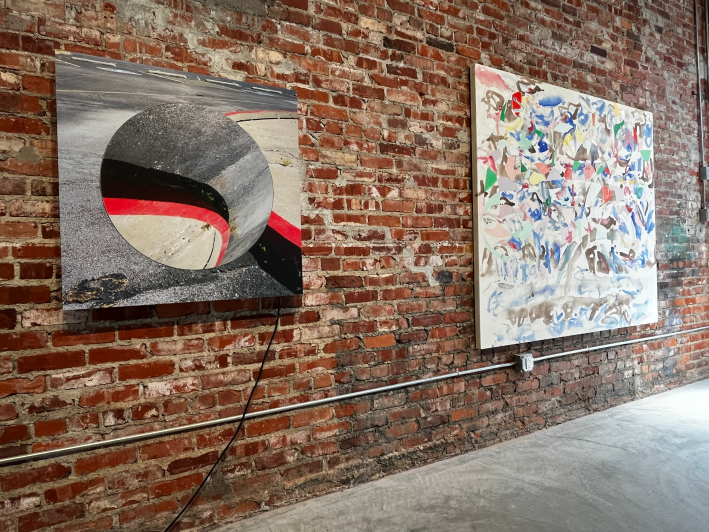
You’ll have to look closely to find Niwa’s sculptures tucked within the space, quietly twining metallic and organic materials together so their opposition dissolves and a hybrid forms emerge. (Niwa is leading a workshop on July 13, with brunch by Prism Cafe, at the Flagship gallery.) You may find either nothing or everything in Mosset’s pure white canvas. And one of the most wonderful pieces in the show isn’t technically "there" at all: Mosset’s sculpture “ICE III” melted (on purpose) in the Flagship alleyway on opening night.
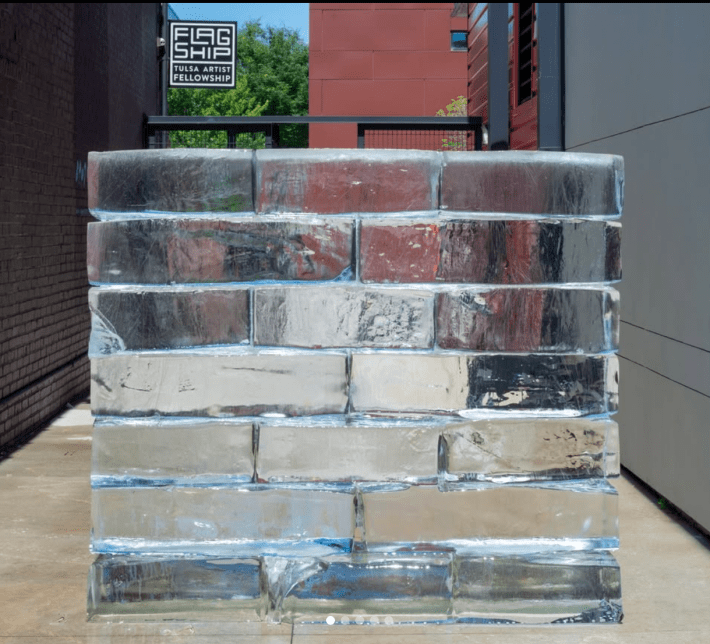
Once you’re no longer there—once you’ve left the gallery—you’ll still sort of be there, too. Spatial Poems is a personal as well as a spatial activation, inviting you to carry that Mary Lucier score out with you (or even invent your own) as a new way of experiencing the world.
“Concentrate on this image, discovering all the circles, squares or triangles in it,” I thought, as I came out of the Flagship alley. I looked across the street and noticed two women standing under the Woody Guthrie mural on the corner of Reconciliation Way and Boston Ave.: three figures, one giant, two small. The building’s own corner made a sharp edge against the sky, perpendicular to the sidewalk: two sides of a square. One of the women put her hand on the other’s arm: a soft, curving intersection, right beside a traffic intersection, in the middle of a creative district where intersection happens every day. Then their faces turned west together, like Woody’s, and the hot sun flooded us all.
